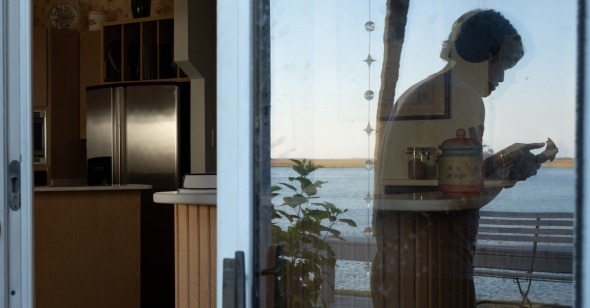This past year, the twentieth that we have been running Reverse Shot, was fecund with deeply pleasurable, intellectually curious, and aesthetically rigorous movies. Our 2023 top ten, accumulated, as ever, by polling major contributors from throughout the last twelve months, features a heartening mix of Reverse Shot regulars (Scorsese, Reichardt, Anderson), exciting newcomers (Citarella, Jackson), and veteran filmmakers who are newcomers to a Reverse Shot top ten (Simon, Kaurismäki, Serra, Glazer), a couple of whom we might never have imagined landing in one of these lists. If last year's list found a number of filmmakers palpating the possibilities and problems of their chosen medium, we find in this group a number of films striving for, and arriving at, a clarity of image or formal arrangement. This need for order and attentiveness is perhaps unsurprising given the world spinning out of control around us. As they say, adversity and pain breed good art, so maybe we’re at the water’s edge of a film renaissance.
As you’ll see below, our beloved Todd Haynes, an inspiration for anyone who, like us, came of cinematic age in the 1990s, has snagged his first RS number one spot after years of almost making it (I'm Not There was #3 in 2007; Carol was #2 in 2015). You could call it all a much-needed boost of encouragement for us fortysomething cinephile editors who are trying to stave off trading in our former “brash young Turk” berets for “decrepit old crank” sweater vests. Check back a year from now and see how we’ve managed on this front. If, of course, we and American democracy are still standing.
[Capsules written by Julien Allen, Sam Bodrojan, Edo Choi, Sarah Fensom, Eric Hynes, Michael Koresky, Chloe Lizotte, Jeff Reichert, Kelli Weston, Chris Wisniewski, and Farihah Zaman.]
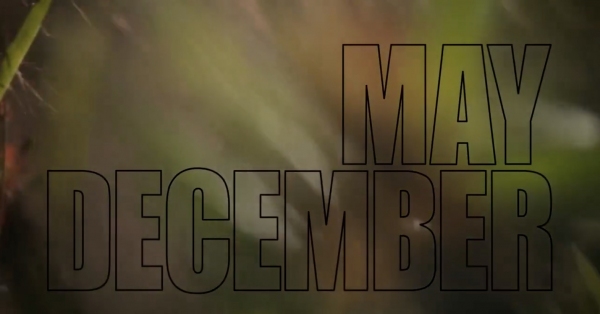
1. May December
A film for an age of automatic-seeming fictionalizations and adaptations, May December razes the foundation of the phrase “based on a true story.” Todd Haynes embraces and deepens the complexities of Samy Burch’s brilliant script, in which Elizabeth (Natalie Portman), a Juilliard-educated actress who rose to prominence through a lowbrow TV role, seeks to level up her career by starring in a movie based on a real-world scandal: in 1992, a 36-year-old woman, Gracie, was caught having sex with her son’s 13-year-old schoolmate, Joe. In 2015, Elizabeth travels to Savannah, GA, to embed with Gracie (Julianne Moore) and Joe (Charles Melton), now married with their youngest on the cusp of graduating high school. Though Elizabeth insists that her portrayal will be “sensitive” and “nuanced,” it doesn’t take long for her search for information—that is, backstory, and a full inventory of Gracie’s behavioral tics—to cast doubt, for us at the very least, on the queasy practice of turning life into entertainment. Haynes cribs Michel Legrand’s score from The Go-Between to gesture at melodrama; Elizabeth’s coffee dates with key figures from Gracie’s life suggest she’s peeling back a layer with each interview, as classical as the false heart of Citizen Kane. Yet there's no “solution” to the center of the story, nor any salvation in projecting a narrative of doomed or misunderstood love—only a life built on a foundation of exploitation that is barely articulable to the people living it. The dark humor of the film serves this important, destabilizing end, making rational interpretations—and the tidy, simplistic filmmaking of others—seem laughably inadequate. —Chloe Lizotte
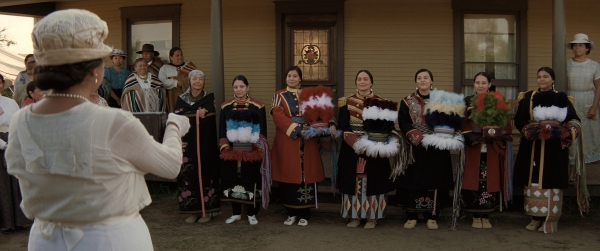
2. Killers of the Flower Moon
Like Bob Dylan’s cinematic protest song “Hurricane,” Martin Scorsese’s Killers of the Flower Moon is an accomplishment of both historical sweep and poetic concision, unspooling the many-threaded and blood-soaked yarn of the Osage oil murders in sprawling, synecdochic verses that each sound the whole and always return to the same outraged refrain. Late in the film, a hapless feller by the name of John Ramsey is called upon by federal agents. Suspected of the murder of an Osage man, which Scorsese has already made us complicit in witnessing, Ramsey (embodied by the lanky, laconic, glass-eyed Ty Mitchell, an actual cowboy and saloon keep from Marfa) submits himself to the law with bitter resignation, pulling himself wearily up from the wooden chair in which he sits, surrounded by his ragamuffin children outside his hog-and-bottle shack—just another bead on the sorry string of hard luck this man calls his life. The scene’s squalid, single-shot tableau, like so many in this authentically textured film, hearkens to Griffith’s The Musketeers of Pig Alley and countless other silents from this period. The most pathetic of the film's many grotesquely callous white men, this deplorable creature, whose moral lassitude and fatalistic detachment from his actions feel like the product of generations of social and economic degradation, befriends his victim Henry Roan (the lovely William Belleau) before the deed, developing a genuine fondness for his drinking partner, only to dispatch him with a dutiful thoughtlessness. The same sense of fealty motivates protagonist Ernest Burkhart (Leonardo DiCaprio): to his uncle, the Satanic ringleader William Hale (Robert De Niro); to the white race; and to the money that is his god. Likewise, a similar intellectual apathy motivates his appalling actions in the film's second half, as he slowly poisons his wife Molly (Lily Gladstone). Increasingly horrified at himself, but finally unable to admit his part in her attempted murder, Burkhart, like Ramsay, represents a new type within Scorsese’s career-length litany of American criminality, a man too stunted even to understand he has a soul to save. —Edo Choi
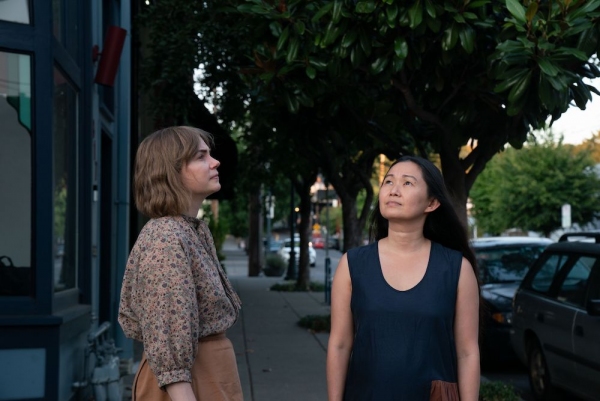
3. Showing Up
At no point in Showing Up does anyone call Lizzy, the dowdy, put-upon sculptor played by Michelle Williams, a genius. It is, however, a word her mother (Maryann Plunkett) uses to describe Lizzy’s brother Sean (John Magaro), an unwell man-child who thinks the neighbors are messing with his television reception. Her mother also calls him creative. “A lot of people are creative,” Lizzy says, a truth borne out through Kelly Reichardt’s gloriously grubby valentine to artmaking at its most unglamorous. Set in a Portland art school, the film is filthy with creative people—most of them women—who labor over making things. They splay on the floor of a hallway to paint, they spin, carve, string up, kindle, dance, and shoot, or, like Lizzy, they have to take a personal day from an office job to meet a deadline for a gallery exhibition. There’s no talk of inspiration or market trends, just doing. Showing Up is frequently funny, but unlike most other comedies about “the art world,” the art, and the making of it, isn’t a joke. Lizzy, with her perma-scowl, defeated posture, and calf-length socks under sandals, can be a risible spectacle, but her work (realized by Portland artist Cynthia Lahti) is pretty fantastic, and everyone seems to know it. Reichardt’s eighth feature, and the sixth to appear in a year-end Reverse Shot Top Ten, unfolds without fuss, with apparent ease, yet the frame keeps offering glimpses into myriad characters, relationships, histories, and aesthetic concerns, each of which could preoccupy another film’s entire narrative. —Eric Hynes
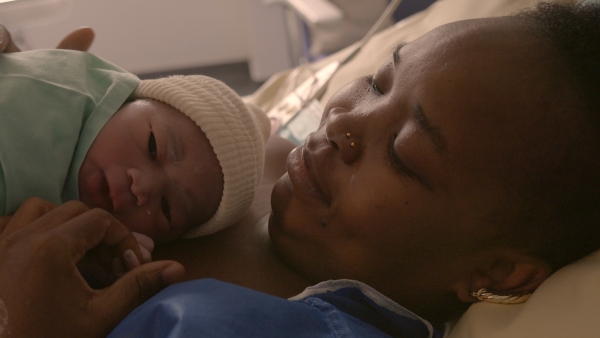
4. Our Body
All the considerations of life, love, legacy, and death are conjured in one hospital’s sterile halls in Claire Simon’s Our Body, a film that steeps in the vast range of experiences for women and those assigned female at birth through the lens of a gynecology ward in France. Completely vérité with the exception of brief narration bookends from Simon, the film gives us one scene after another—from a fertility consultation to a pelvic exam, from a surgical procedure to a meeting between doctors and hospital administration—filmed with bold simplicity, allowing us time to be with each patient. The structure is rigid, but the film is all the more supportive, rather than constrictive, for it, its intense focus heightening the minutiae of voice and body language. Considering how many of them share, with disturbing matter-of-factness, the ways in which a misogynistic society has trained them to downplay pain and dismiss their intuition, Simon’s choice to listen, deeply and without judgment, is an act whose power is felt by both subject and viewer. As time passes, twinned stories emerge: one woman emotional over her journey with IVF, another relieved to have a safe abortion; a trans teen accepts the limitations of gender-affirming care he can receive without the support of both parents, while a trans woman approaching sixty who must reduce her estrogen therapy contemplates the decades of embodying her womanhood in ways that transcend the use of a daily pill. The vignettes are arranged to create an expansive, meandering arc over the course of a life, from those just beginning to fully inhabit their bodies to those who, facing death, must learn to let them go. The sense of collective, if not monolithic, experience suggested in the film’s title is honored by Simon’s most tender turn, as she traverses the gap between “her” and “their” bodies by inviting us to bear witness to her own care and reflections on mortality. —Farihah Zaman
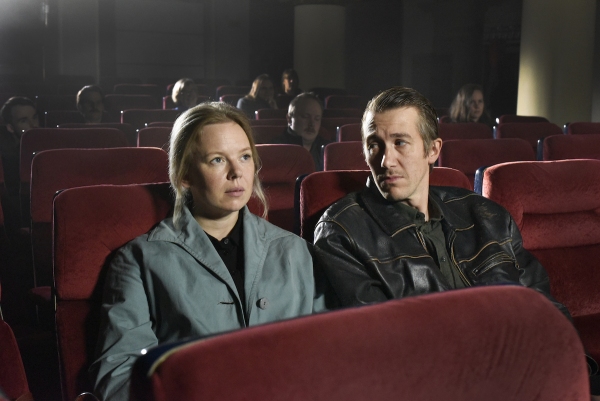
5. Fallen Leaves
In his 2008 novel-in-stories Seibo There Below, the Hungarian writer László Krasznahorkai presents a vision of the artistic practice through ages and cultures that is obsessive and all-consuming, the product of endless time spent whittling away at a craft, hours that expand into days and on into years, until, through some alchemic blend of that perseverance, and more than a little luck, the maker finds what they’ve been after. I thought of Seibo as the end credits rolled on Fallen Leaves and the feeling it left me with that Aki Kaurismäki, long one of our most consistent (and perhaps consistently undervalued) filmmakers, has, at last, produced something like an ideal expression of his cinema. There is much here that’s familiar: the glum self-sabotaging alcoholic and lonely shift worker, who meet at the saddest karaoke bar and prove to be kindred spirits, recall any number of Kaurismäki couples, and their love story is sweet and droll and sad, by turns, as one would expect. His compositional sense and deployment of color remain sneakily strong and graphic. His stylized visual universe is regularly punctured with real-world concerns (here, the ambient threat of the Ukraine war—production began mere months after Finland applied to join NATO, a move Kaurismäki has protested) and winks at other films and filmmakers (Jim Jarmusch’s The Dead Don’t Die, of all things, and Chaplin’s City Lights). Yet after more than 40 years of his making films, very often great ones, Fallen Leaves operates with a newfound effortlessness and confidence. It just…glows somehow. Its scenario is simple, yet the filmmaker coaxes from well-trod ground huge, knotty feelings and wonderful catharsis. It’s a miracle that Kaurismäki managed a film this happy in a world that he clearly knows has gone so sad. —Jeff Reichert
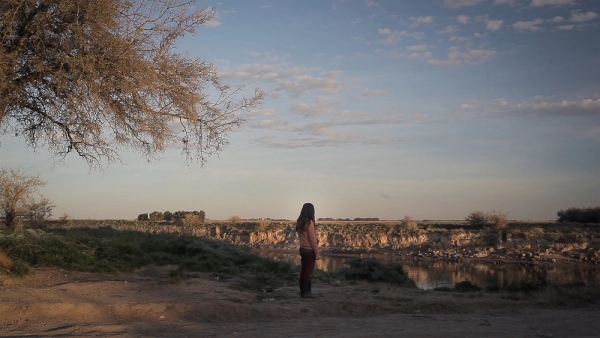
6. Trenque Lauquen
A swift rejoinder to the “nothing happens” naysayers of international art cinema, Argentinean filmmaker Laura Citarella has made a film in which everything happens—and then happens again, then folds in and back on itself, then creates odd echoes and reverberations in places you least expect. Functioning on a sublimely subconscious level, the intensely observed yet anti-empirical Trenque Lauquen is named for the Buenos Aires suburb where Citarella and co-writer/star Laura Paredes’s characters dig into and around like moles tunneling to nowhere, albeit with an intense shared purpose. Citarella’s storytelling has some Raul Ruiz-ian—so by extension Borgesian—circuitry but flaunts an imagination all its own, one that makes almost any other filmmaker of recent years seem hopelessly single-minded and a little joyless. Divided into a pair of two-hour sections that together look less like a parallel diptych than unstable figure-ground forms (do you see the vase or the two faces?), Trenque Lauquen initially has the shape of a missing woman meta-noir. Naturally her name is Laura, a biologist from the city studying local plant life, and her seekers are two men: an austere, academic boyfriend, Rafael (Rafael Spregelburd), and a recent crush, university driver Ezequiel (Ezequiel Pierri), who join forces before splintering off from one another in veiled mutual disgust. Unbeknownst to Rafael, Laura had intoxicated Ezequiel, pulling him into her own obsession with a trail of decades-old love letters hidden in books at the library. There are flashbacks, stories within stories within stories, and multiple modes of visual and aural address—but Citarella has something less definable, more devious, and a lot queerer in mind than a mere exercise in nested narratives. While part one pleasingly enfolds us in its dual romances, mesmerizing the viewer as Laura has done for Ezequiel, part two employs one alienating device after another, pushing an elegant meditation on impossible love into something rapturously inexplicable: an interrogation of local myth and superstition that reframes everything we have seen in perfectly imperfect incongruity. Citarella is a member of the El Pampero Cine collective that has been making the movie landscape more exciting for the past 20 years, and Trenque Lauquen vibrates, moment for moment, with the thrill of discovery. —Michael Koresky
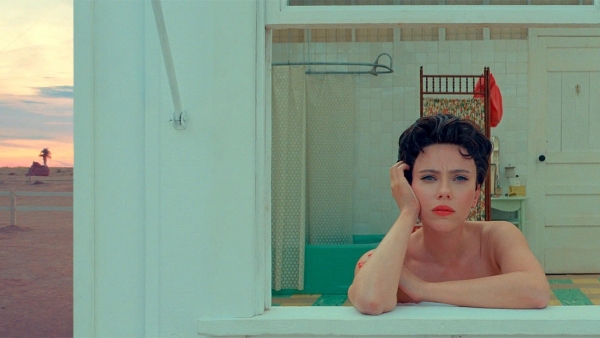
7. Asteroid City
The year’s best movie about the atomic bomb, Wes Anderson’s Asteroid City is the crowning achievement of contemporary American cinema’s pre-eminent modernist. Following a father (Jason Schwartzman) trapped with his children in a desert roadside attraction during a youth science convention in the 1950s, the film emerges as a labyrinthine ensemble work about emotionality in a transitory political and artistic era. Anderson’s style was mimetically bludgeoned by AI earlier last year, but even divorced from any comparison to such pathetic plagiarism, the intricacy and dynamism of his newest effort is a mild shock. The blocking and framing explode in a cacophony of sightlines, like a Baroque painting in motion. The high-wire Matryoshka doll narrative act of the film, encompassing some two dozen characters, elegantly and gleefully escalates across a dizzyingly dense two hours. Herein the audience encounters a cornucopia of oddities: an extra-terrestrial, a possessed car motor, a juvenile heist, and, in one show-stopping set piece, a Brechtian acting exercise in sleepwalking. All these hijinks cohere around Anderson’s own fear that he, along with the rest of the world, can only access real sentimentality and pathos through absurd artifice. One of the few artists whose tics have become universally legible, Anderson leverages this privilege towards a directness with the audience. The characters articulate their failures with utter frankness amidst a swirl of dryly rehearsed colloquialisms. The film climaxes with the appearance of Margot Robbie, a ghost from a different story, speaking directly into the camera, as if Anderson is pleading, in earnest, with the audience to feel what he feels. Asteroid City is a richly accomplished work of art that feels summative only in that nobody could nail this without decades of practice runs. —Sam Bodrojan
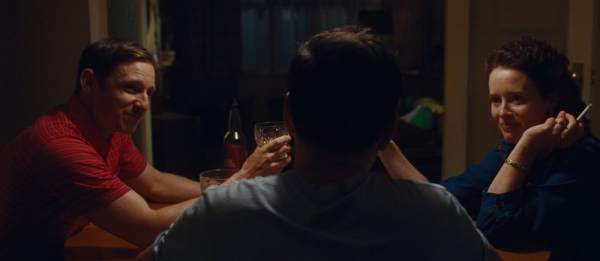
8. All of Us Strangers [tie]
Is it a ghost story? A sensitive but unsparing look at the relationships between parents and children? Or perhaps it’s a romance? Maybe an excavation of the divide between generations of gay men? Or is it some sort of metaphorical survey of the emotional topography of “queerness”? The answer is that it’s all of the above, while also being greater than the sum of these parts, as well as something more specific: a portrait of a queer, 40-something screenwriter not altogether unlike the movie’s writer-director Andrew Haigh—at least, demographically—grappling with his very personal sense of alienation. Adam, the fictional artist in question, played with world-weary soulfulness by Andrew Scott, spends the film working on a project about his long-dead parents (Claire Foy, Jamie Bell). Meanwhile, he initiates a tentative affair with a younger neighbor (Paul Mescal), seemingly the only inhabitant of his otherwise deserted London high-rise. One might puzzle over what actually happens in All of Us Strangers. The ontological nature of the encounters, conversations, and events Adam experiences throughout the movie is indeterminate. But Haigh is less interested in literal plot mechanics than in raw, wrenching emotional truth. Anchored by four performances of exquisite emotional clarity and heart, All of Us Strangers tells a very queer story indeed—one that says to each of us that it sees and understands the fundamental estrangement that is a necessary condition of human experience. More than that, this heartbreaking, generous movie offers something improbable in return: a warm embrace for each of us to wrap ourselves in through the inevitable, long, and lonely nights to come. —Chris Wisniewski
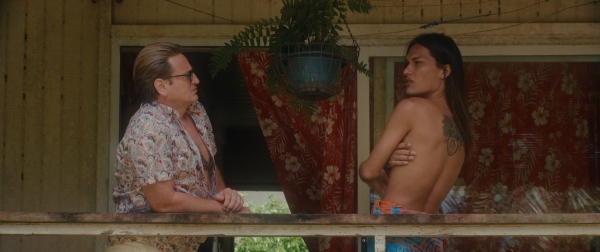
8. Pacifiction [tie]
Albert Serra’s first present-day film steers us into a cinematic register at the intersection of Chris Marker and Michael Mann, at once naturalistic and surreal, sublime and subliminal. Benoît Magimel’s De Roller is the slippery, white-suited High Commissioner to French Polynesia, an intoxicating South Pacific collectivity of paradisiacal beauty and colonial chicanery, teeming with stories true and untrue, between myth and deception. De Roller’s power is ebbing, though you wouldn’t know it at first as he parades about the island, mingling with the local nightclub’s Ori Tahiti dancers and taking meetings with concerned locals. One of the islanders, Shanna (Māhū actress Pahoa Mahagafanau), the film’s only open-book character, detects his vulnerability early and reverses the political polarity by becoming his protector and companion. As the sea of intrigue rises and De Roller’s obscure, aesthetically bewitching fantasies begin to emerge, we sense his hold on things listing, then slipping away. His principal antagonist, the slight, whey-faced “Admiral” (Marc Susini), whose naval cap doesn’t quite fit, brings to mind Delphin Servaux’s headmaster in Vigo’s Zero for Conduct—comically grotesque and all the more intimidating for that. By prolonging each sequence beyond its natural duration, Serra calibrates the action to the oneiric pace of that world and underscores the extent of De Roller’s impotence and the emptiness of his monologues. The Admiral’s final speech—from a disgraced colonial power which treats its “property” as a nuclear testing ground—blows the film off course, lurching on waves of imbecilic patriotism, running Serra’s film aground in a dreadful reality: to France’s eternal, devastating shame. —Julien Allen
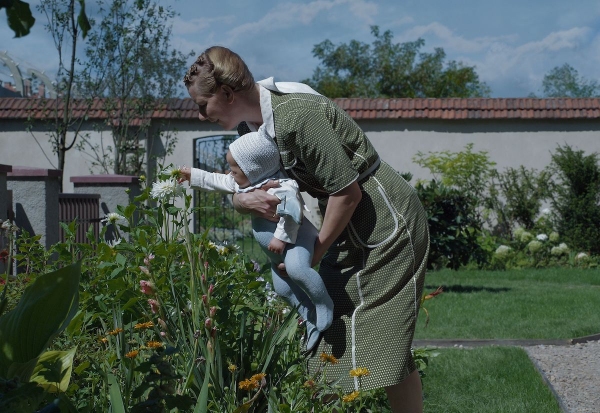
9. The Zone of Interest
In The Zone of Interest, the viewer is made to watch a Nazi family succeed. Jonathan Glazer’s film, which is very loosely based on Martin Amis’s 2014 novel, follows Rudolf Höss, the longest-serving commandant of Auschwitz, his wife Hedwig, and their five children as they go about their lives in a spacious villa adjoining the death camp. The Zone of Interest is Arendt’s “banality of evil” writ large, a highly conceptual exercise in which history’s vilest people are seen enjoying the mundane happiness and pettiness of bourgeois life. Glazer shot the Höss house and yard using synchronized hidden cameras, which gives the effect of watching the Nazis as one would his neighbors next door. The filmmaker’s art is one of withholding, and while we hear muffled gunshots and screams in the distance, here it’s the sounds and accompanying images of laughter and splashes in the family pool that portray the devastating brutality of the Holocaust. In this adherence to normativity, this utter tastelessness in showing even a single moment of familial joy or safety, the film becomes a radical denunciation of fascism, and how and among whom it foments. In the last act, the action moves away from the Höss family home and its environs for the first time. It follows Höss in Oranienburg as he sits in meetings, shakes hands, and assists in the final plans for the genocide of a people. Glazer has brought the viewer on the Nazi officer’s business journey, a twisted variation on 2023’s spate of corporate dramedies (think Flamin’ Hot, Air, Blackberry). Höss’s success in pitching and executing his ideas is punctuated by the film’s final moments, when Glazer jumps to footage of the museum at Auschwitz in the present day (significantly, the only time we’re taken “inside” the camps). It’s a gut-wrenching reveal, even though we already bear the pain of its history. —Sarah Fensom
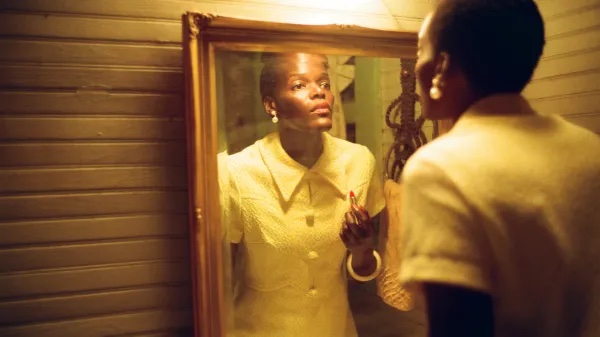
10. All Dirt Roads Taste of Salt
Both sides of my family—solidly metropolitan for years now—hail from the sun-soaked midlands of South Carolina, doorway to the Deep South. My people are not generally made for serious winters, so there exist venturous branches as far north as New York (including myself) and New Jersey, and as far west as Illinois and Missouri. Otherwise, most of them have clung to their roots. Generations had survived the South's pogroms, and they would not be moved. But even we scattered deserters helplessly cling to the old ways. We still observe the superstitions of our childhoods. (I remain compelled, the way my grandmother taught me, to mind every thunderstorm—"the Lord is busy”—by sitting in silence.) Tradition matters. In her formidable feature debut, All Dirt Roads Taste of Salt, writer-director Raven Jackson (herself a native of Tennessee) archives all of the seemingly unremarkable moments that map a life—fishing, cooking, cuddling—the intimate, everyday habits that turn living into art. The film’s subject, Mack, grows from a girl to a woman in rural, 1970s Mississippi in elegant sequences, laden with (physical and lyrical) texture. It’s a tale composed of largely quotidian episodes, with each lovingly composed shot foretelling of veiled pain or heralding coming joy. These glimpses of sustained care, in their intricate minutiae and steady accrual, as elusive any reverie, amount to a well-loved life: the precious revelation of time. —Kelli Weston
